A well provides plenty of freshwater for us at Toolik, and currently the entire camp uses roughly 500-800 gallons per day. Wastewater though is a bit tricky. All wastewater at Toolik Field Station has to be trucked off site. Being located on top of permafrost presents challenges for underground wastewater disposal or treatment, and we don't want to contaminate the groundwater or the lake in any way since Toolik Lake serves as a long term research site. We take water conservation very seriously as it costs approximately $1.25 per gallon to ship our waste water 111 miles to Prudhoe Bay. Even the high efficiency front-loading washing machines we have at Toolik use a little more than 20 gallons of water per load. That means it costs about $25.00 to dispose of the water from just one load of laundry! TFS employee Jeb Timm explained that everything is metered at Toolik. He stated that approximately 85% of the wastewater hauled out of Toolik comes from the kitchen and shower module (showers and laundry), while the towers produce only 15%. Jeb also ran some numbers to calculate that water consumption per person per day is only 13.1 gallons. This is something to be proud of when you consider that the average American uses close to 100 gallons per day!
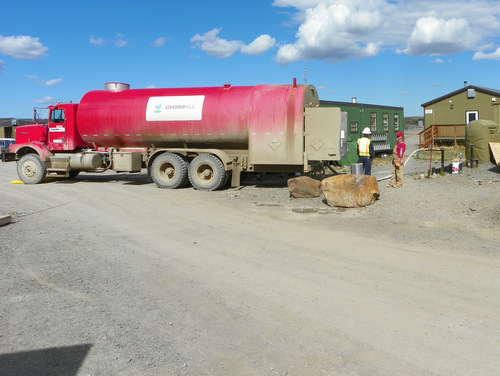
Showers are limited to a maximum of two per week at two minutes per shower. Taking a "Marine" shower, where you turn the water off to soap up, seems most effective. Most people here don't even shower that often, instead opting to take bucket showers on the deck of the wood-fired sauna. In fact, Toolik didn't even have showers until 2002. We are allowed one load of laundry every two weeks, and sharing loads is encouraged. Most faucets work on either timed handles, or motion sensors.
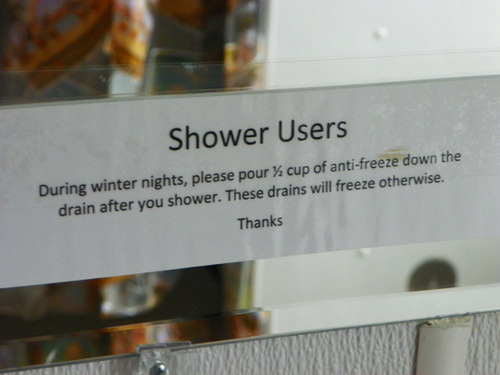

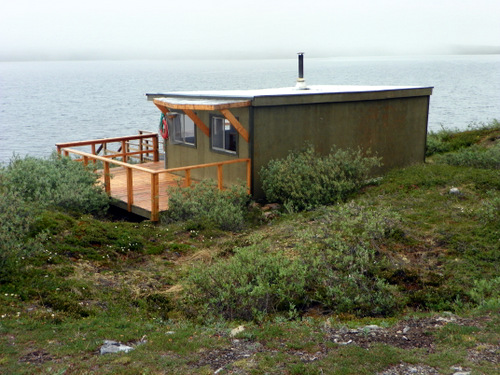
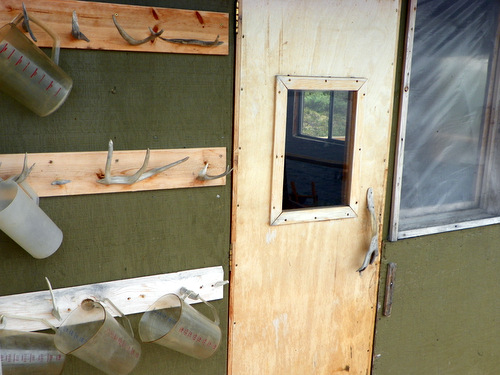
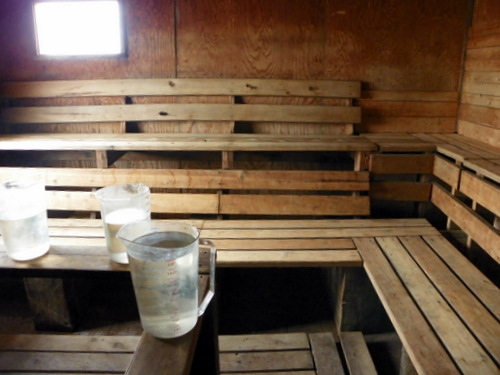
Three "towers" are located throughout the field station. Think of them as outhouses on stilts. The wastewater tanks have to be kept above ground here on the permafrost, so you walk up stairs to use the bathroom. To conserve volume all toilet paper has to be thrown in garbage cans and it is later incinerated with our other burnable trash. Toolik has two flush toilets in the dining hall. The same rules apply for throwing toilet paper in the garbage can, and a "if it's yellow let in mellow" policy has been embraced.
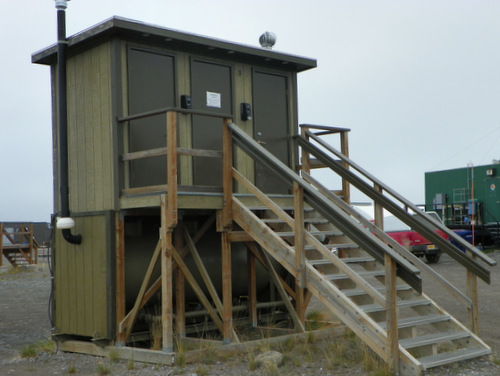

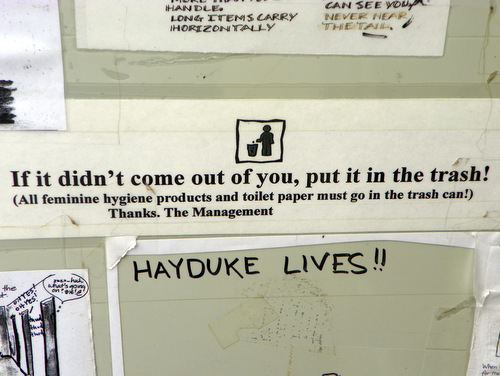
Our water conservation efforts seem even more impressive when you consider these water facts from the U.S. EPA:
- American residents use about 100 gallons of water per day.
- Americans use more water each day by flushing the toilet than they do by showering or any other activity.
- At 50 gallons per day, residential Europeans use about half of the water that residential Americans use.
- The average faucet flows at a rate of 2 gallons per minute. You can save up to four gallons of water every morning by turning off the faucet while you brush your teeth.
Source: http://water.epa.gov/learn/kids/drinkingwater/water_trivia_facts.cfm
Save Water at Home
Seven things you can do to save water at home:
- Take shorter showers, and avoid taking baths unless you keep the water level low.
- Install a low-flow shower head in your shower.
- Install inexpensive, low-flow aerators in your water faucets at home.
- Purchase a modern, low-flow toilet, install a water-saving device in your toilet, or simply place a water bottle (or brick) inside your toilet tank to reduce the water used for each flush.
- Don’t let the water run while you are brushing your teeth.
- Wash only full loads in your dishwasher and washing machine.
- Water your lawn sparingly, and in the early morning or late evening to avoid evaporation.


Comments